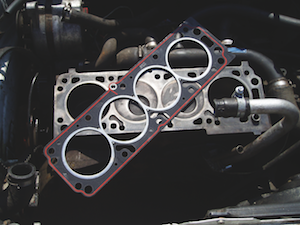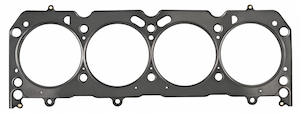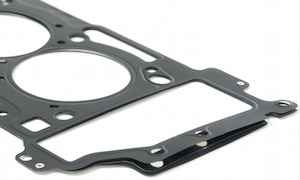We know what a gasket is, but what does it actually do, and how?

What is a gasket? It sounds like an obvious question, but in point of fact, it is not the easiest to answer. Some would say it is any flexible material used to mate two surfaces, while others would have a more technical answer that distinguishes a gasket from a seal. Others, particularly those that own anything powered by the Rover K-series, might have another (possibly unprintable) definition of a gasket.
But for the rest of the aftermarket, when someone talks of gaskets they are generally referring to the cylinder head gasket, which as everyone knows is to act as an air, oil and watertight seal between the head and the block. If the gasket blows when the engine overheats then the driver will hopefully notice the sudden increase in temperature and take action before the head warps or the block cracks.
COMPOSITION
Head gaskets generally used to be made from a form of fibre, but these days are more often than not made from steel. The reason for this is that the crush rate is far more predictable, meaning the head can be tightened with a torque wrench without needing to carefully half-tighten each of the bolts in turn.
Another reason for using steel is that with crush gaskets the height of the cylinder head can vary, literally depending on how much the gasket is crushed under the cylinder head. This might seem like an inconsequential amount, but it makes a difference to modern fuel injectors that have a tolerance of only a few microns.

PROBLEMS
However, steel gaskets have not been without problems. OEMs have battled with creating a gasket that will apply an adequate amount of pressure to stop gasses from escaping. One way of doing this is to add an additional ‘fire ring’ into the steel, although some aftermarket gaskets don’t have this welded ring, instead relying on a ring folded into the metal. Last time we addressed this issue, we spoke to Dominic Moxon, a Senior Product Engineer at FAI Automotive who explained: “The problem is this folded design will not last as it will not be able to cope with the pressures generated in the combustion chamber”.
Clearly, having to do a job twice, particularly an involved and complex task like a head gasket, so it pays to track down a gasket of a similar design to whatever was fitted to the vehicle originally.
WELL I’LL BE BLOWN… GASKET MYTHS DEBUNKED
Paul Grosvenor from Mahle advises that one of the most common misconceptions is that a good plan with a diesel engine is to replace the head gasket with a thicker one.
“It is not best practice to do that” he says. “The difference in the gasket thickness exists primarily because of the tolerance on other parts. It can ultimately affect the emissions levels by using a thick gasket when it should use the thinnest one”.
“Best practice is to fit like for like, because gasket thickness is calculated on the protrusion of the piston from the engine block so if they are only changing the head gasket they should fit the same as was fitted on it originally”.
UNDERLYING ISSUE
Dominic Moxon of FAI Automotive says that if a head gasket has been fitted for some time suddenly goes then technicians need to look for an underlying cause. “There is always a reason for it failing whether that is down to a manufacturing process, installation issues or a running fault”.
REMAN STANDARD
Simply replacing the gaskets and cleaning a used engine does not make it a remanufactured part. In the UK, the Federation of Engine Remanufacturers agreed a set standard for remanned engines 20 years ago and more recently agreed a strict definition with six other trade groups. John Gray, FER President, said: “The remanufacturing industry has lead the acceptance of a range of terms that have UK origins. This international agreement also provides us with further proof that remanufacturing is on the rise, which is extremely positive for the industry.”

COOLING BLOCK
Pour-in instant head gasket is hardly a professional repair, but claims that it will clog or cause damage to the cooling system appear to be wide of the mark, at least if you are using the Steel Seal product. “It contains no fibrous material to seal your blown head gasket. It relies on a thermo chemical bonding process that is a chemical reaction, to seal the leak in your blown head gasket” reads a statement from the company.











Go to comments